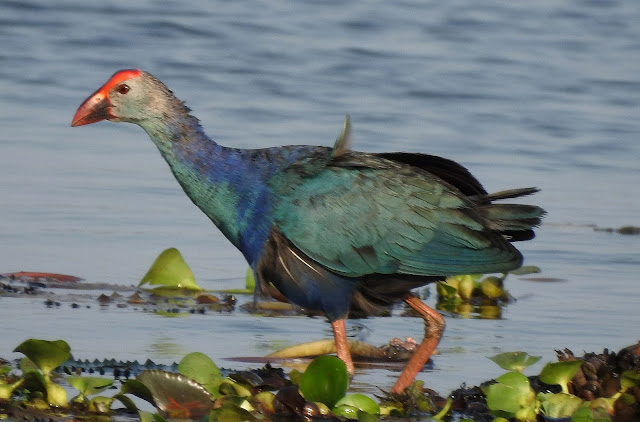The Grey-headed Swamphen, Porphyrio poliocephalus, presents a striking figure with its slate-grey head and neck, contrasting with the deep blue of its body. This species, once considered a mere subspecies of the Purple Swamphen, has since 2015 been recognized as a full species in its own right.
To identify the Grey-headed Swamphen, look for its large size and robust build, with long legs and toes that are well-adapted to its wetland habitat. The male and female are similar in appearance, though the male may perform an elaborate courtship display.
This bird is typically found in wetlands, where it can be seen wading through shallow waters or striding along the marshy banks.
The Grey-headed Swamphen ranges from the Middle East and the Indian subcontinent to southern China and northern Thailand. Notably, an introduced population has established itself in southern Florida, North America.
Males engage in a unique courtship ritual, brandishing water weeds in their bills and bowing to females with a series of loud chuckles, a display that is as endearing as it is peculiar.
The vocalizations of this species during courtship are characterized by loud chuckling sounds, which are part of the male's display to woo the female.













%2020.jpg)
%2021.jpg)
%2022.jpg)
%2010.jpg)